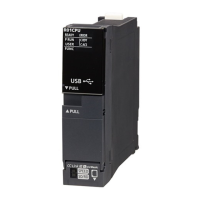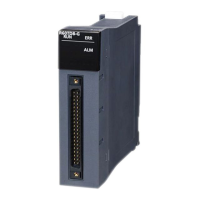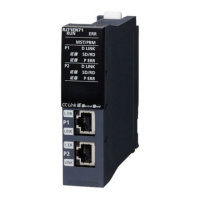484
28 FUNCTIONS
28.6 Program Execution in Both Systems
Tracking transfer
• Do not set global devices used in a program executed in both systems as a tracking transfer target. Due to tracking
transfer, the standby system data is overwritten with that of the control system, and the standby system program may
operate in an unintended way.
• When using a label in a program executed in both systems, use a local label.
• When using an FB in a program executed in both systems, use a local FB. If a global FB is used, a program execution
result of the control system is transferred and written over a program execution result of the standby system, causing an
unintended operation.
Restricted instructions
The following table lists the instructions that are restricted in a program executed in both systems.
Classification Notation Description
Calling a subroutine program CALL(P) These instructions may not normally operate if a subroutine with any of a rising
instruction, falling instruction, or SCJ instruction in a program which is not set as a both
systems execution program is called in the standby system.
Calling a subroutine program and turning the
output off
FCALL(P)
Calling a subroutine program in the specified
program file
ECALL(P)
Calling a subroutine program in the specified
program file and turning the output off
EFCALL(P)
Calling a subroutine program with output off XCALL
Program control instruction PSTOP(P) No operation is performed if these instructions are executed on a program which is not
set as a both systems execution program in the standby system.
POFF(P)
PSCAN(P)
Redundant system instruction SP.CONTSW No operation is performed if this instruction is executed in the standby system.
PID control instructions (Inexact differential) S(P).PIDINIT The PID control instruction information of the control system is transferred and written
over the PID control instruction information of the standby system. When these
instructions are executed in the standby system, a stop error may occur.
S(P).PIDCONT
S(P).PIDSTOP
S(P).PIDRUN
S(P).PIDPRMW
PID control instructions (Exact differential) PIDINIT(P)
PIDCONT(P)
PIDSTOP(P)
PIDRUN(P)
PIDPRMW(P)

